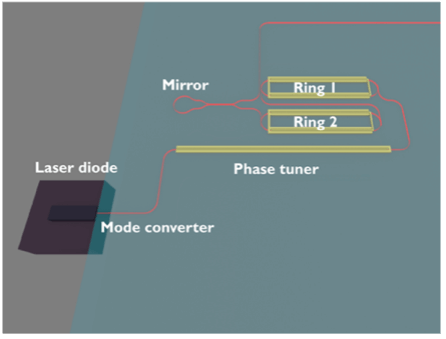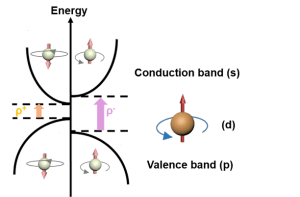Summary
Leakage current in electronic components is one of the limiting factors for the performance of conventional computers which use charges and currents as physical information carriers. Spintronics offers an alternative by using electron spin for information transfer, processing and storage, enabling the design of non-volatile computer memory and more energy-efficient electronic devices. In this project, we develop a new class of low-dimensional quantum materials for spintronics applications, which are based on colloidal metal halide perovskite semiconductor nanostructures. We explore the control of spin polarization in these systems based on magnetic exchange interactions between dopant centers and the nanocrystal charge carriers. A particular focus is on tuning spin exchange interactions by the selection of dopants and the ability to compositionally modulate nanocrystal band structure. Beyond spintronics, our results on spin interactions in metal halide perovskite nanostructures could open a new field of material research and ultimately result in new approaches to quantum information processing.
Related Content

Visible wavelength external cavity diode lasers in photonic integrated circuits for atomic technologies
Atoms can be controlled by manipulating their internal states using agile, quiet and reliable laser sources. An external-cavity diode laser (ECDL) is a crucial enabling technology to realize such laser sources since it allows for the narrowing of the linewidth of a laser diode and precise tuning of the laser frequency. This project aims to […]
April 19, 2023
Novel Superconducting Qubits for Error-Corrected Processors
Summary In this project, we develop novel superconducting qubits for error-corrected processors to enable large-scale quantum computing. Our design efforts will specifically target error-corrected architectures through a variety of paths. Possible features will include built-in parity measurements and the use of bosonic codes, such as Fock state and Cat codes, as our starting focus. Early […]
June 26, 2019

Topological Properties of Exciton-Polaritons in a Kagome Lattice as a Solid-state Quantum Simulator
Summary In this project, we build a solid-state quantum simulator for engineering a specific Hamiltonian. Quantum simulators are purpose-built devices with little to no need for error correction, thereby making this type of hardware less demanding than universal quantum computers. Our platform consists of exciton-polariton condensates in multiple quantum-wells sandwiched in a semiconductor Bragg […]
December 8, 2018

Plasmon Control of Quantum States in Semiconductor Nanocrystals
Summary Thanks to the light-induced collective oscillations of free charges at the boundary between a conducting material and a dielectric, known as surface plasmon resonance, metallic nanostructures can exhibit strong light absorption and scattering. The sensitivity of these resonances to the local environment and shape of the metallic structures allows them to be used, […]
March 21, 2018


